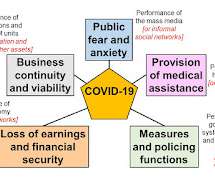Covid-19: Elements of a Scenario
Emergency Planning
MARCH 11, 2020
In 2020, some confusion arises from the fact that much of the planning refers to influenza, whereas the SARS category of diseases is not strictly a 'flu virus, but most of the planning principles are exactly the same, so this is mainly a labelling issue. For example, civil aviation is particularly vulnerable.











Let's personalize your content